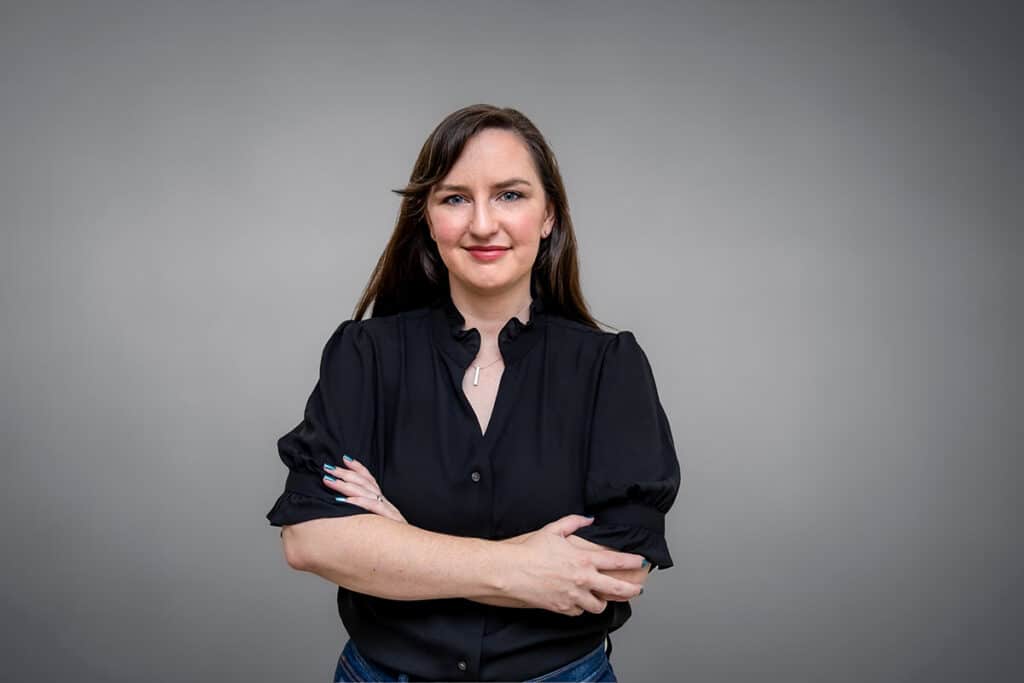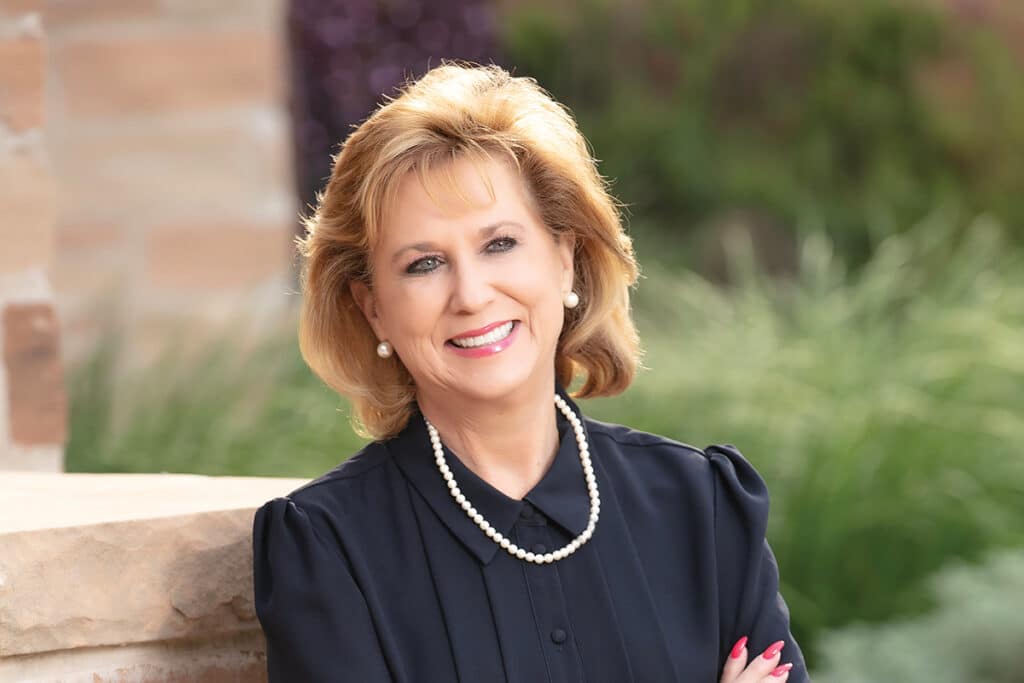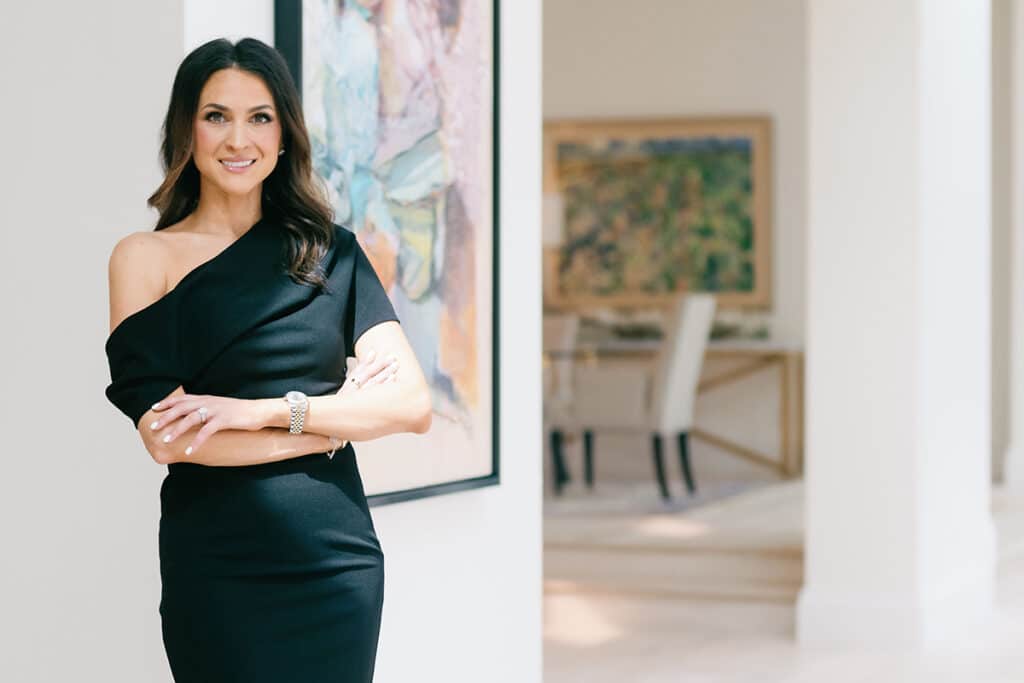With long workdays and busy schedules, we can get caught up in the daily drill and forget what it’s all for. If we don’t take a step back and assess our situation every now and then, our autopilot may take us in the wrong direction. These four women help others financially plan for life’s different stages. They specialize in financial advising, life insurance options and estate planning and administration.
Sarah Trenchard, who works with New York Life Insurance, describes life’s different stages in insurance terms as the “protection, accumulation and distribution phases.” During each of these stages, the goals vary accordingly, and there are a multitude of strategies.
“When we start talking industry jargon, people just glaze over,” says Liz Crawford, investment adviser and managing director of Sendero. So Crawford works “to empower women in managing and investing their wealth.”
Carol Mani Johnston, who runs the Mani Johnston Group at UBS, learned the importance of financial planning from her father. “Your profession is what you earn your living with,” he taught her, “but your investments are how you really are able to get the rest of the things that you would want in life that might be over and above what your income can produce and provide.”
“Sometimes there’s a hesitancy just to even talk to somebody about doing a will or any kind of estate planning because it’s hard to think about,” says Lauren McLaughlin, a board-certified attorney who practices estate planning.
Women need to take the time to pay attention to their finances, consider their goals and make a plan, whether they are just starting out, getting married and having children, rising to the top in their careers or retiring.
Carol Mani Johnston
 Thirty years ago, Carol Mani Johnston recalls that when she was starting out in the brokerage business at age 22, “There was only one question the person who was interviewing asked me. He said, ‘Is your skin thick enough to handle it?’”
Thirty years ago, Carol Mani Johnston recalls that when she was starting out in the brokerage business at age 22, “There was only one question the person who was interviewing asked me. He said, ‘Is your skin thick enough to handle it?’”
Thanks to her perseverance and competitive spirit, it was. Three decades later, Johnston runs the Mani Johnston Group at UBS. She’s weathered the market crisis in 1987, the terrorist attacks in 2001 and the financial crisis in 2008-2009.
Johnston is grateful for the host of mentors and training she’s had along the way. In the mid-80s, she recalls, “it was a lopsided field and at a time when women had not really gained any kind of acknowledgment that they also could be a good adviser.” Yet Johnston, who double majored in international business and math, and played competitive tennis, didn’t subscribe to the myth that these needed to be male-dominated fields.
She believes that women’s abilities to multitask, as well as listen carefully to “the intricate details of people’s lives,” are vital strengths of financial advisers. At UBS, Johnston loves the family atmosphere and small, boutique quality of the company. It allows her the time and support that can then flow directly to her clients.
“To deliver financial advice that is really helpful, you have to have time for contemplation, you have to consider all the various challenges that the individual may be going through,” says Johnston, who caters to the 50-and-over group. She helps them to determine their goals and how to prioritize them.
According to Johnston, a person’s financial portfolio is like the spokes in a wheel: the financial, health, tax and legal concerns. Johnston and her team consult with each client “in order to complement and make sure investments are in line with long-term legal aspects and taxation, whatever the entity may be, and the caring and providing so you don’t outlive your money.” They work with a multi-generation client base to make sure “the passing of wealth can be as efficient as possible.”
A person’s biggest fear, she explains, is to outlive his or her money, which is a genuine threat for the sandwich generation—the demographic of people who find themselves in a position of caretaking for both their elder and younger generations. Johnston has personally felt the squeeze. When she was in her 30s, her mother was diagnosed with multiple sclerosis at the young age of 50. Johnston spent the next 23 years helping her mother through her illness, as well as the expense of health and nursing care. Then, near the end of her mother’s life, Johnston gave birth to her first child, which, by chance, coincided with the beginning of the 2008-2009 financial crisis.
“I found incredible strength I never knew I had,” says Johnston. “Helping worried clients, caring for a newborn and aging family member gave me the real perspective that so many investors face today. I am a better adviser because of this experience.”
Johnston works to make sure her clients understand why they own what they do. Her role as a financial adviser is “an ongoing process” that can and often does last decades, “through good and uncertain economic periods and the obstacles that we all experience through life’s challenges both unexpected and anticipated. We continuously monitor and modify their investment portfolios to reflect their current and revised longer-term goals and legacy.”
Liz Crawford
 “This industry is really good at not talking to the woman, not looking her in the eye, patting her hand and telling her not to worry about it,” says Liz Crawford. As an investment adviser and managing director at Sendero Wealth Management, she can understand how “that’s very infuriating, particularly if you’ve built a business, or if it’s your wealth and they assume it’s his.”
“This industry is really good at not talking to the woman, not looking her in the eye, patting her hand and telling her not to worry about it,” says Liz Crawford. As an investment adviser and managing director at Sendero Wealth Management, she can understand how “that’s very infuriating, particularly if you’ve built a business, or if it’s your wealth and they assume it’s his.”
As a businesswoman, wife and mother of four children, Crawford brings multiple perspectives to the table, so she understands the diverse roles women play. “We try to be very cognizant of the people that we’re working with,” she says.
Crawford learned from her father, who was a stock analyst and portfolio manager. “I used to watch him pace the halls at night worrying about a client’s assets, worrying about bad things that were coming, and how he was going to prepare for it, and I would think, ‘I would never do that for a career.’ But never say never.” She received a BA in psychology from Boston University, but when she was having a difficult time finding work, her father asked her to join him at his firm until she found something. That marked the beginning of her own financial career.
“After the four years together, I had a great understanding of stocks and bonds, why you trade them, what’s attractive about them, what’s not, what to avoid,” she says. “He took the time to tell me economic indicators and how they play into the stock market and what it means, so it was a great base.” Yet her psychology studies have also helped her to better understand and counsel her clients.
“We’re people and we work on emotions. If you’re only looking at the numbers, the data and the performance, you’re missing half of the client experience, so we really try hard to bring those two pieces together,” she says. Sendero manages $3.5 billion in assets for around 80 clients. This small environment allows Crawford to treat her clients like family so that she can really get to know them and their needs.
She explains, “Part of managing money is not beating an index, it’s what does this money mean to you? What do you want from this money? What are your goals?” Once she understands these specifics, Crawford arranges the asset allocations accordingly.
“Investing is half of managing the wealth. There’s also an emotional component to it that most people don’t address,” she says. For example, Crawford and her colleagues have found that families who were successful are “clear communicators; they made sure everybody was brought up-to-date and had access to information, and those families worked together beautifully.” On the other hand, families who were uncomfortable talking about wealth have had problems.
Crawford describes Sendero as “one of the best-run firms I’ve ever seen.” What makes it that way, Crawford explains, are processes in place: “It’s just very forward-looking, while most firms are very reactionary.” Sendero works with latest technology, such as providing a secure portal to their clients, so they have access to their information 24/7.
There is a $5 million client minimum at Sendero. Crawford explains that this money “is not easily replaceable. They say that they could not for the most part make the money again. They sold a business that they spent a lifetime or decades building, or they’ve inherited money.” She and her clients determine the plan after building in the cost for fees and inflation. She works to educate her clients about the choices in their portfolio: “It doesn’t happen overnight. It’s consistently talking about it.”
Lauren McLaughlin
 In estate planning, the first step is the hardest. Lauren McLaughlin, a board-certified attorney who practices estate planning at Strasburger & Price, LLP, says people need to consider what will happen when they are gone.
In estate planning, the first step is the hardest. Lauren McLaughlin, a board-certified attorney who practices estate planning at Strasburger & Price, LLP, says people need to consider what will happen when they are gone.
“I don’t want people to feel like it’s such a morbid thing to think about,” says McLaughlin. Yes, you have to face your mortality when creating a will, but “for all the years that I’ve been doing this, I’ve seen enough horror stories of unintended consequences when somebody doesn’t have a good will in place.”
In Texas, if you die without a will, default laws will go into effect, and people need to understand what will happen. Also, “If you’re in a blended family, you need to be even more aware and understand the ramifications of that. The Texas Estates Code states where your money will go if you die, and without a will, in blended families that can sometimes not flow how you would otherwise expect or think it would. Once you have that information, you can make good choices about it,” McLaughlin explains.
She spends half her time helping clients create wills and the other half administering estates. Because she sees both sides of the process, she’s gained important insight into how things can go right — and wrong.
After learning the law, clients need to put key documents, such as wills and lifetime instruments, into place. McLaughlin advises her clients to think about what they want to do with their money and what their intentions are. Planning correctly not only helps to assure their intentions are carried out, but it can also allow for the possibility of reduced estate taxes and protection of their money, depending on who will inherit it.
Ideally, McLaughlin would love to have all of her clients’ advisers sitting around the table, and everyone would collaborate, because “sometimes when you’re each working in your own little silos, things can slip through the cracks.”
Originally from San Antonio, McLaughlin finished her undergraduate degree at the University of Texas in three years and then attended Columbia Law School in New York. She is the mother of four young children and has been practicing estate law for 11 years. She loves the wide range of specialists at Strasburger, which allows them to be “full service” for their clients. As the youngest partner in her group, she can rely on the experience of other partners who have been practicing longer. “I feel confident in saying you never stop learning and you never stop seeing something new,” she says. That’s what makes her job interesting.
“I always felt like estate planning was the right niche for me. I really like how much you interface directly with clients,” McLaughlin says. “I feel like I’m really helping people through what otherwise would be a very difficult time, such as to understand how to get through an estate administration after a loved one has died. And on the planning side, it’s a very personal thing to help people plan for how their money and how much of their money is going to eventually reach their children and grandchildren.”
One of her favorite parts of the job is getting to work with multiple generations. She often begins with a matriarch and patriarch, but then their children come in to make sure their wills collaborate with their parents’, and then they bring in their children.
Meanwhile, Strasburger has “been wonderful working with me and making the juggling act a little bit easier,” she says. “I feel like I’ve hit my stride. I’m where I’m meant to be.”
Sarah Trenchard
 At the young age of 30, Sarah Trenchard is already a partner at New York Life Insurance Company, where an infinite variety of insurance and financial products are offered to help with clients’ estate and financial planning. She helps to run the office, which has almost 100 advisers, as well as to train and develop agents and advisers.
At the young age of 30, Sarah Trenchard is already a partner at New York Life Insurance Company, where an infinite variety of insurance and financial products are offered to help with clients’ estate and financial planning. She helps to run the office, which has almost 100 advisers, as well as to train and develop agents and advisers.
As the only female and youngest person on the management team, Trenchard has accomplished quite a bit at an early age. She won the prestigious Million Dollar Round Table for three consecutive years and was one of the top female advisers under the age of 25 in the nation. “This opportunity has changed my life and is actually a lot of fun,” she says. She owes her success largely to her drive and authenticity, but she also stresses the importance of relational skills in her industry.
“Numbers are not what we do; that’s the back end,” she explains. “What we do is connect with people. We build relationships because we’re helping them make changes in their lives. We’re helping them protect their families and their assets, so our conversations are very personal. I can’t tell you how many times somebody has cried in my office. We almost take on a counselor role, and that’s why women are so good at this.”
According to Trenchard, “about 70 percent of women prefer to work with a female adviser.” Her major objective now is to recruit new talent. “It’s a fantastic opportunity. It’s great for single moms because the schedule is very flexible and the income potential is really just up to you.” While recruiting new agents, she looks “for people that are genuine and have a deep desire for more — for themselves, their families … It’s all about relationship building and just being yourself.”
The life insurance industry allows Trenchard to track society’s changes. “Women make up over half the workforce,” so the need for financial advising is rising, she explains. Women need to understand their finances, she points out, because they live longer than men, and more women are waiting to get married, often because of their careers.
Instead of making assumptions, Trenchard and her colleagues assess their clients by asking them a series of questions. This investor profile helps her to get a better understanding of her clients’ most important financial goals and concerns. “For example, when you go to the doctor, he cannot give you a diagnosis without hearing your symptoms first. That’s what we do,” she says.
There are multiple ways to address a client’s needs, depending on their circumstances. Life insurance has the benefit of being tax-free when you pass away; annuities have the benefit of a guarantee. Also, Trenchard offers long-term care insurance, which pays the nonmedical expenses for in-home or nursing home care.
When helping clients, Trenchard doesn’t speak the dry jargon of finance but turns to analogies instead. “This is why I’m good at what I do, because I take very complicated concepts and make them very simple to understand,” Trenchard laughs. An annuity “is a form of a retirement vehicle, like an IRA or a 401(k); it’s just a different wrapper around the candy bar.”
An annuity’s benefits are customized, based on her clients’ needs, such as with a fixed rate of return or with a guaranteed floor, which assures that clients will get their principal back, no matter what happens with the economy.
The main point is that financial planning with life insurance and annuities allows tax advantages and savings while minimizing risk. “Tell me what you are concerned about,” says Trenchard, “what’s most important to you, and then we’ll devise a plan.”
By Wendy Atwell
Photography by Elizabeth Warburton




